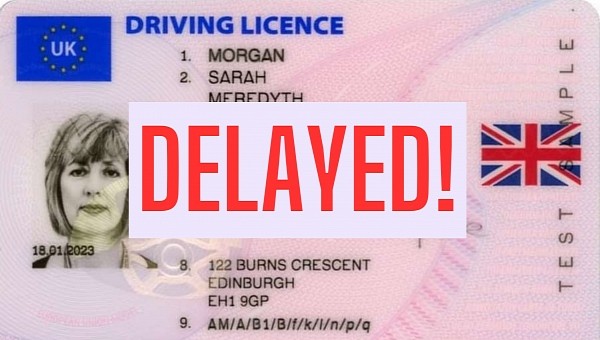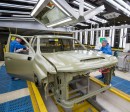The chip shortage that’s been wreaking havoc in the automotive industry is now impacting the production of driving licenses.
The semiconductor crisis emerged in 2020 when a significant number of users asked employees to work remotely. Because of this transition, sales of certain electronics, such as PCs, phones, and printers, skyrocketed, as employees needed new computers and peripherals to remain productive at home.
Chipmakers prioritized orders aimed at their biggest clients, and as a result, car manufacturers ended up facing a fierce shortage of semiconductors.
The effects of this crunch continue to cause production challenges today. Toyota confirmed earlier this week that its January sales were down year-over-year, blaming the constrained chip inventory as the main reason.
Now the lack of chips is causing problems in the production of driving licenses too. Indian authorities in the Gautam Budh Nagar say they’ve been struggling with the lack of chips since at least November. The current backlog counts approximately 18,000 licenses.
The same problem is encountered in other regions, with thousands of drivers being told to wait for their documents until the chip shortage is resolved.
While no information has been offered on this front, local authorities claim the chip inventory is improving. This means driving licenses should start being issued shortly, with the distribution to then run at full speed to new drivers.
The problems hitting authorities in India serve as living proof that the semiconductor shortage is here to stay. Previously, industry analysts claimed the chip problems would be resolved in 2023, especially as sales of PCs and smartphones are going down.
While this is already happening, with the PC market dropping at a worrying pace in the last quarters, the automotive market is yet to see a substantial recovery in terms of inventory. Chipmakers are investing in retooling, which would allow them to build chips for vehicles, but the process takes time and can’t happen overnight.
Furthermore, the new facilities, whose role is to boost capacity, wouldn’t start manufacturing until 2024.
This is why some carmakers are rather reluctant when it comes to the end of the chip shortage. In addition to Toyota, General Motors has also warned that the inventory problems could continue in 2023. The company’s CEO said the struggle could continue even in 2024, especially as the market instability is causing prolonged uncertainty.
Indian authorities claim the local chip supply is showing signs of recovery. However, just like in the case of the automotive industry, it’s hard to predict if the inventory can improve in the long term. As such, further delays in the issuing of new driver’s licenses are still possible, especially now that authorities are working at full speed to resolve the entire backlog of 18,000 units.
Chipmakers prioritized orders aimed at their biggest clients, and as a result, car manufacturers ended up facing a fierce shortage of semiconductors.
The effects of this crunch continue to cause production challenges today. Toyota confirmed earlier this week that its January sales were down year-over-year, blaming the constrained chip inventory as the main reason.
Now the lack of chips is causing problems in the production of driving licenses too. Indian authorities in the Gautam Budh Nagar say they’ve been struggling with the lack of chips since at least November. The current backlog counts approximately 18,000 licenses.
The same problem is encountered in other regions, with thousands of drivers being told to wait for their documents until the chip shortage is resolved.
While no information has been offered on this front, local authorities claim the chip inventory is improving. This means driving licenses should start being issued shortly, with the distribution to then run at full speed to new drivers.
The problems hitting authorities in India serve as living proof that the semiconductor shortage is here to stay. Previously, industry analysts claimed the chip problems would be resolved in 2023, especially as sales of PCs and smartphones are going down.
While this is already happening, with the PC market dropping at a worrying pace in the last quarters, the automotive market is yet to see a substantial recovery in terms of inventory. Chipmakers are investing in retooling, which would allow them to build chips for vehicles, but the process takes time and can’t happen overnight.
Furthermore, the new facilities, whose role is to boost capacity, wouldn’t start manufacturing until 2024.
This is why some carmakers are rather reluctant when it comes to the end of the chip shortage. In addition to Toyota, General Motors has also warned that the inventory problems could continue in 2023. The company’s CEO said the struggle could continue even in 2024, especially as the market instability is causing prolonged uncertainty.
Indian authorities claim the local chip supply is showing signs of recovery. However, just like in the case of the automotive industry, it’s hard to predict if the inventory can improve in the long term. As such, further delays in the issuing of new driver’s licenses are still possible, especially now that authorities are working at full speed to resolve the entire backlog of 18,000 units.






